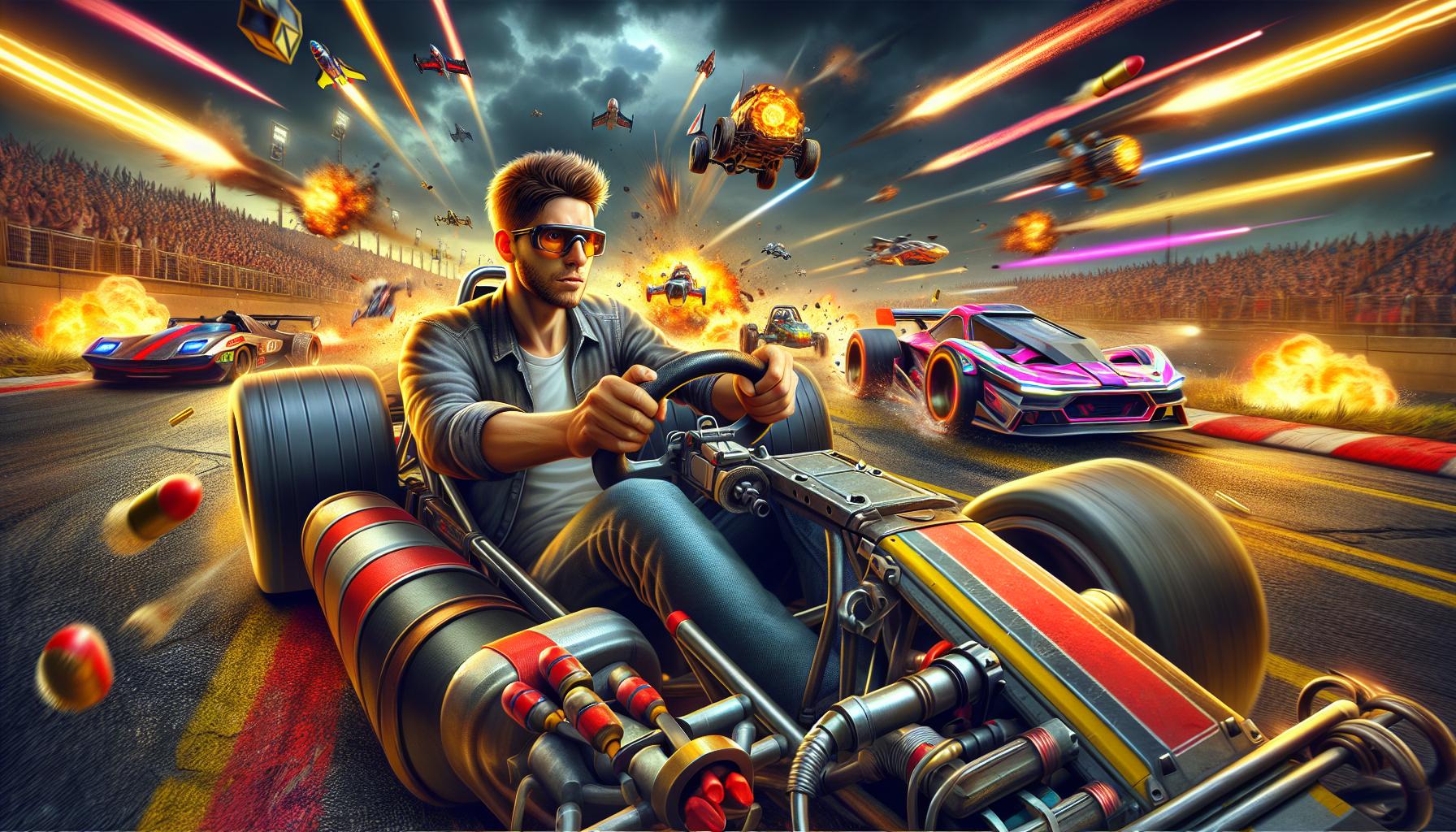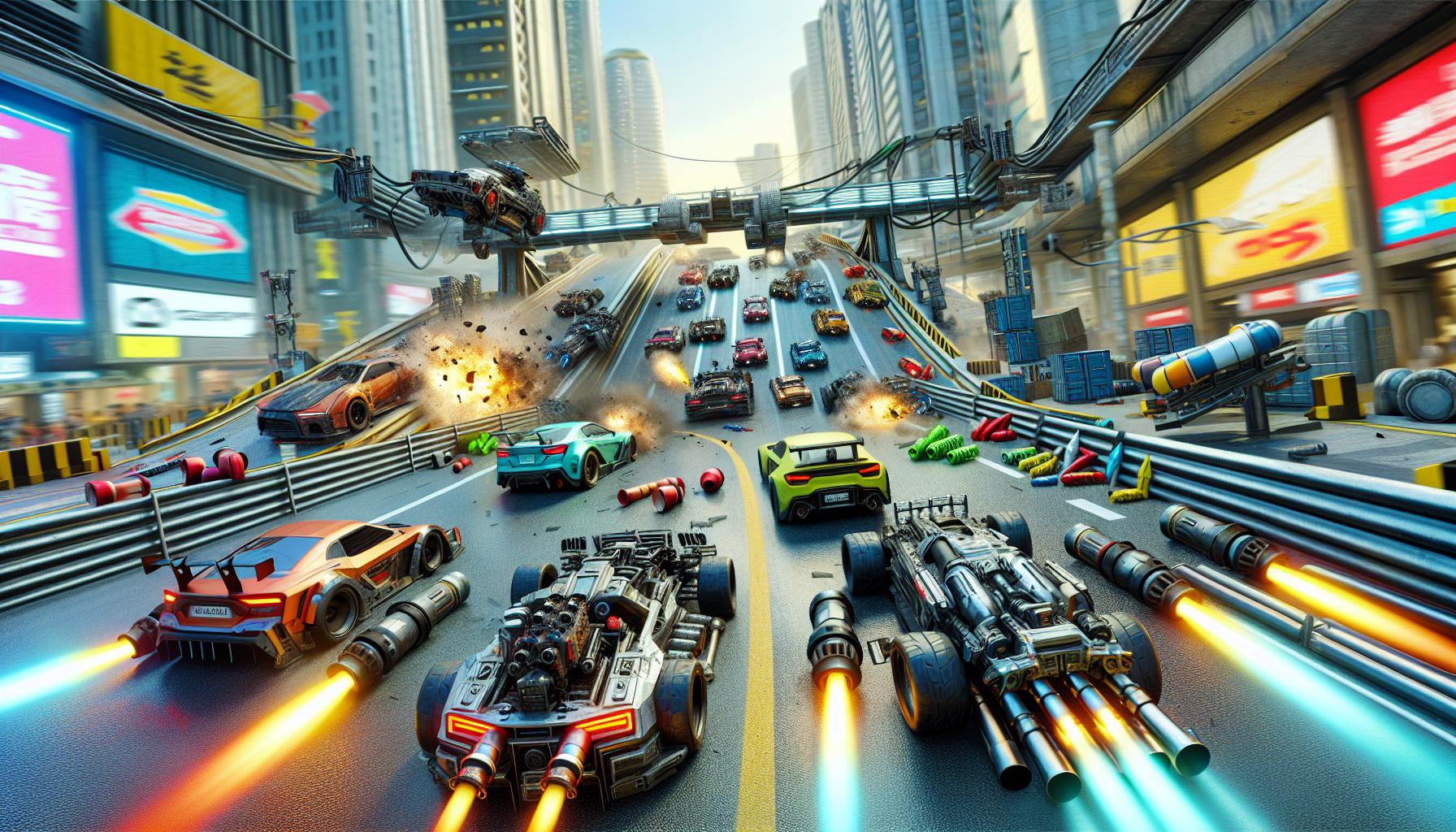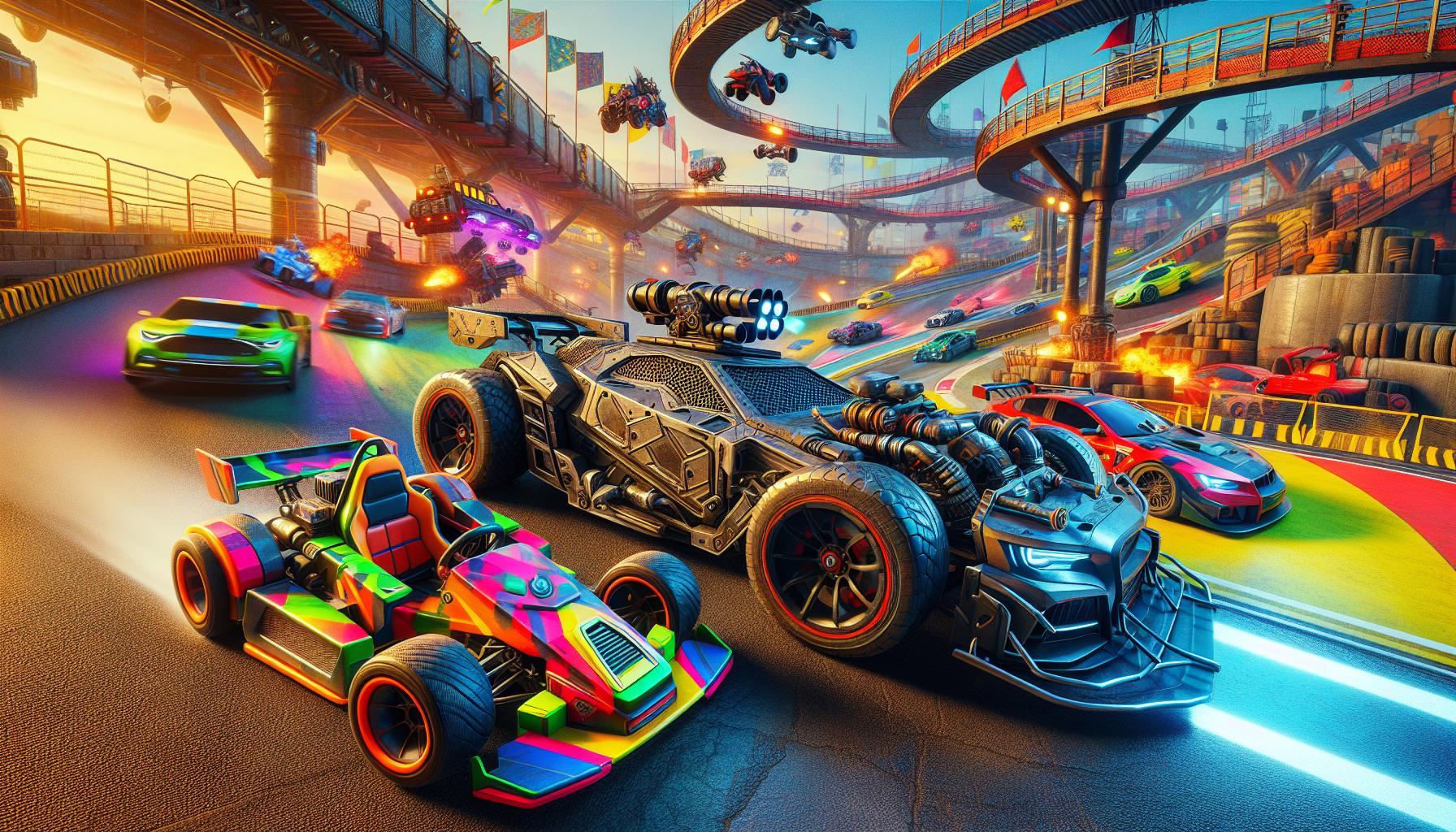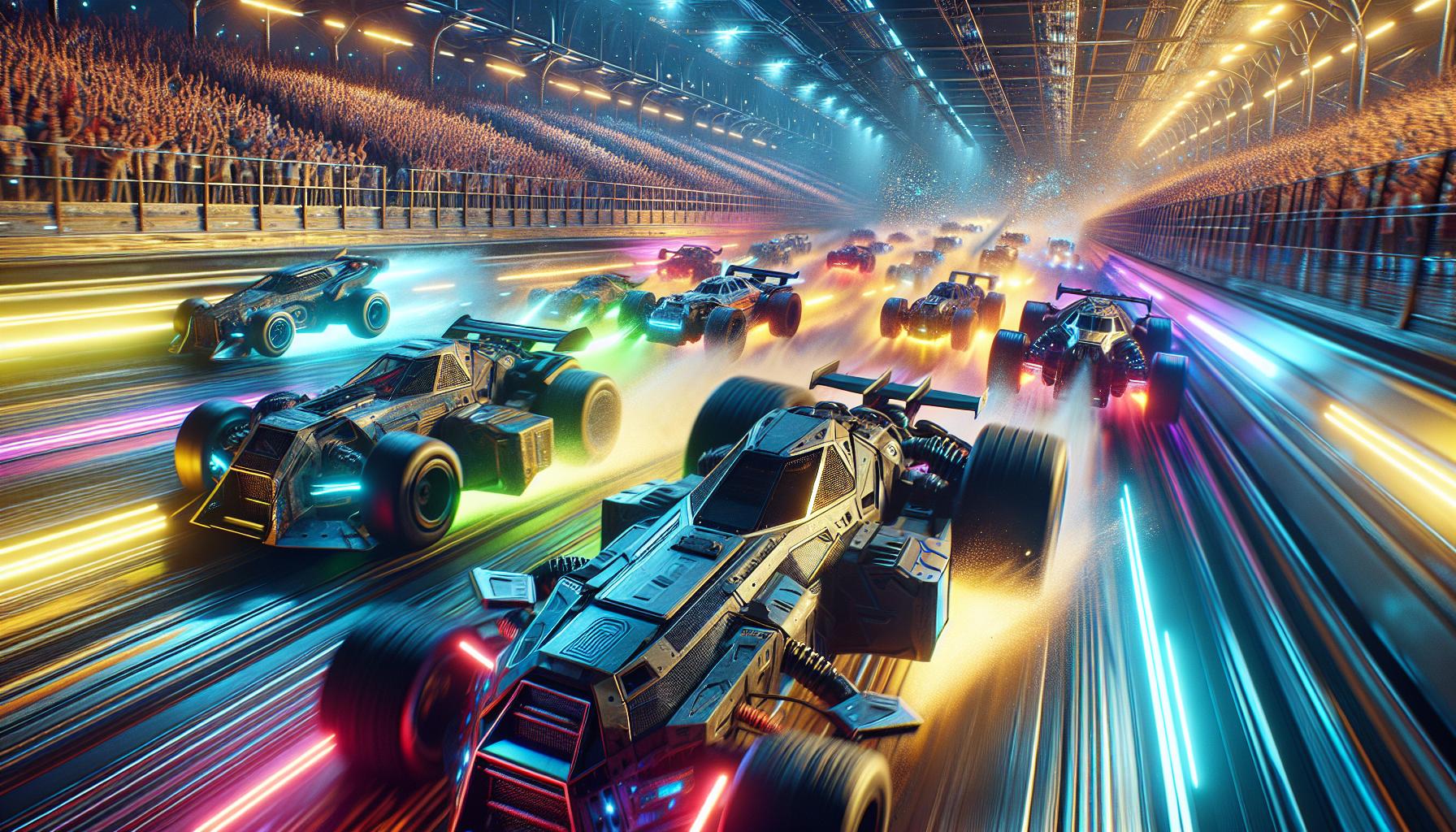Phone:
(701)814-6992
Physical address:
6296 Donnelly Plaza
Ratkeville, Bahamas.

When it comes to adrenaline-pumping excitement, combat racing games stand out as a thrilling genre that combines speed with strategy. I’ve always been drawn to the rush of racing, but adding weapons and power-ups takes the experience to a whole new level. Picture speeding down a track while dodging missiles and unleashing chaos on your opponents—it’s pure exhilaration.
These games offer more than just a test of driving skills; they challenge players to think quickly and adapt their strategies on the fly. Whether you’re a seasoned racer or new to the scene, the blend of racing and combat creates an immersive experience that keeps you coming back for more. Join me as I dive into the world of combat racing games and explore what makes them so captivating.
Combat racing games merge the thrill of high-speed racing with the excitement of weaponry and tactical maneuvers. Players control vehicles equipped with various weapons, enabling them to attack opponents while navigating dynamic tracks. This genre enhances traditional racing by introducing obstacles and challenges that require quick reflexes and strategic planning.
Key features of combat racing games include:
Popular titles like Twisted Metal and Mario Kart epitomize this genre, showcasing the blend of racing skill and combat strategy. Engaging in combat racing requires not just speed but also the ability to outsmart opponents, making this genre unique within the racing landscape.

Combat racing games stand out due to their unique blend of speed and strategic warfare. Essential elements contribute to the thrilling experience, making these games captivating for players.
Weapons and power-ups define the chaos of combat racing. Players utilize an array of weaponry, including missiles, machine guns, and mines, to attack rivals while striving for victory. Power-ups, scattered across tracks, grant advantages such as speed boosts, shields, or disruptive abilities, creating opportunities to turn the tide in competitive play. Strategically deploying weapons at the right moment can shift the race outcome, where a well-placed mine can hinder an opponent’s progress and allow the player to surge ahead.
Tracks and environments play a crucial role in shaping the combat racing experience. Designed with dynamic hazards, shortcuts, and varied terrains, these courses challenge players’ driving skills and tactical thinking. Environments range from urban landscapes with tight corners to expansive desert tracks littered with obstacles. Navigating these intricate designs adds layers of strategy, as players must balance speed with awareness of the track’s dangers. Each environment presents unique challenges, enhancing replayability and keeping the gameplay fresh and exciting.

Combat racing games offer exhilarating gameplay characterized by speed and strategic weapon use. Here are two standout titles that exemplify the genre’s excitement.
Twisted Metal stands as a classic in the combat racing realm. Released in 1995, it features various vehicles, each equipped with unique weapons and abilities. I enjoy the diverse maps where players engage in frenetic battles. The game encourages strategic play, allowing me to choose shortcuts while dodging opponents’ attacks. With multiplayer modes, it’s perfect for competitive sessions with friends.
Mario Kart revolutionized the racing genre by incorporating whimsical elements into combat racing. This game series boasts creative tracks filled with iconic characters and power-ups like shells and bananas. I’ve spent hours perfecting skills on courses while utilizing items to hinder competitors. The accessible gameplay caters to all skill levels, making it enjoyable for casual and hardcore gamers alike. Mario Kart consistently embraces fun, and the multiplayer features amplify the competitive nature of racing.

Combat racing games have undergone significant transformations since their inception, integrating advanced technologies and evolving gameplay mechanics. Early titles, like Battle Cars (1995), laid the foundation by merging racing with destructive tactics. These games focused primarily on weapon usage while maintaining a basic racing structure.
The introduction of Twisted Metal in 1995 marked a pivotal moment, elevating the genre through intricate map designs and unique vehicle abilities. This game showcased a blend of destruction and strategy, where players had to navigate engaging environments while utilizing various weapons effectively. Players experienced a new level of chaos as they raced through dynamic arenas, providing a thrilling atmosphere that defined combat racing.
The 2000s brought further advancements, as developers began to focus on multiplayer experiences and enhanced graphics. MotorStorm (2006) introduced diverse environments and user-generated content, allowing players to experience combat racing in sprawling landscapes. This shift emphasized the importance of varied terrains and real-time strategy, showcasing how environmental interactions could alter the racing experience.
With the rise of internet connectivity, online multiplayer became a staple in combat racing games. Titles like Rocket League (2015) took the concept to new heights, combining high-speed racing with soccer mechanics, creating a unique competitive environment. The gameplay dynamics shifted, focusing on teamwork and strategy, while still inheriting core combat racing elements.
Recently, games like Crash Team Racing Nitro-Fueled (2019) have reinvigorated nostalgic elements, merging classic gameplay with modern design. This evolution has led to a resurgence of interest in the genre, demonstrating its adaptability to current gaming trends. The incorporation of seasonal updates and online play keeps the community engaged, highlighting the evolving nature of combat racing.
As technology advances, the future promises even more innovations in combat racing games. Enhanced graphics, virtual reality, and more sophisticated AI will continue to push the boundaries, ensuring the genre remains exciting and relevant. The journey of combat racing games reflects a rich history, illustrating their growth from simple racing experiences to complex tactical challenges.
Combat racing games have carved out a unique niche in the gaming world that I truly love. They blend the thrill of speed with the chaos of combat in a way that keeps me on my toes. Whether I’m dodging missiles or strategizing my next move, each race feels like an adrenaline-packed adventure.
The evolution of this genre has been remarkable, and I can’t wait to see what the future holds. With advancements in technology and game design, the possibilities for new experiences are endless. I’m excited to continue exploring this dynamic genre and sharing my journey with fellow fans.